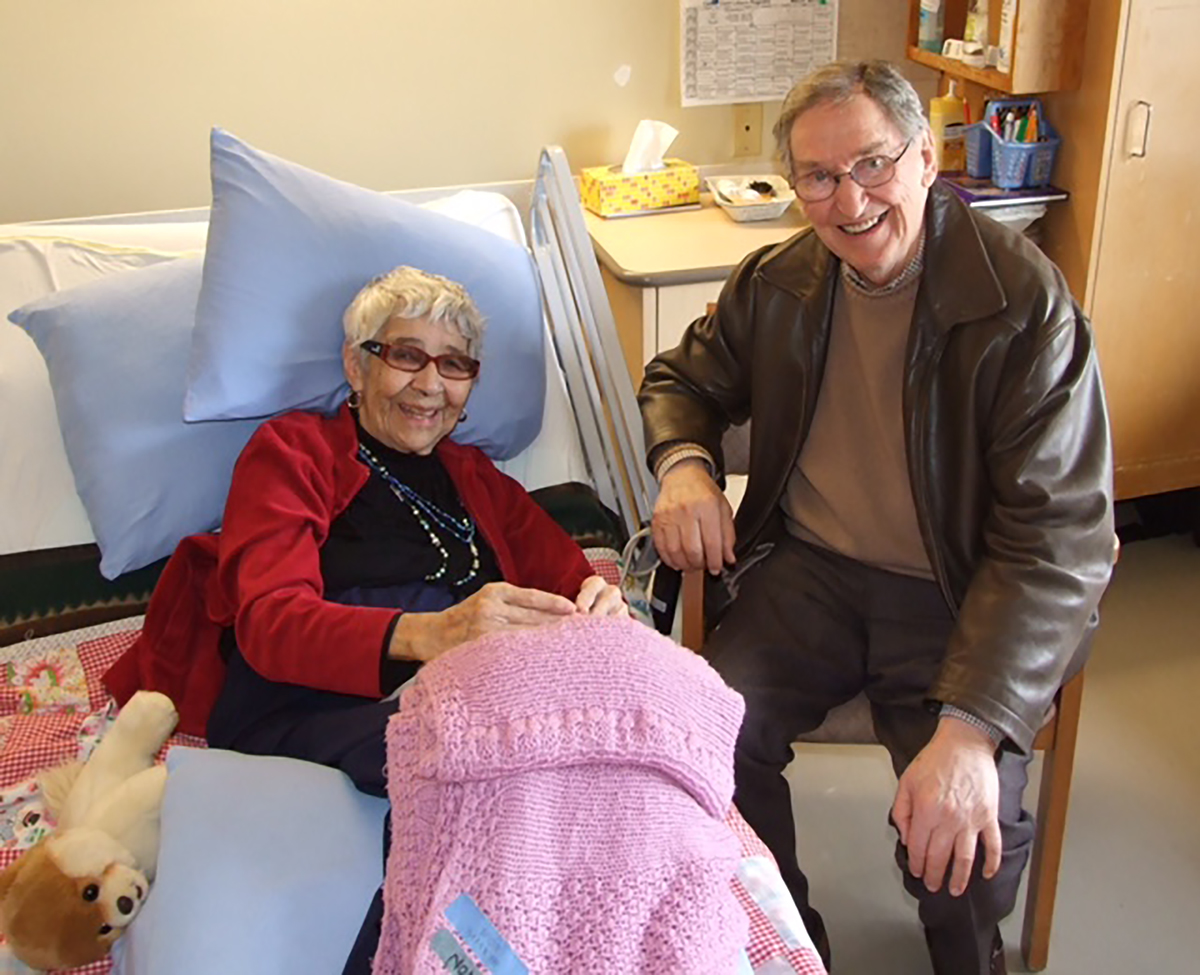The Vagn Andersen Collection
Exhibition & Sale Begins February 17, 2024I met Vagn Andersen (1926-2019) and his wife Margaret in 2007 at the opening of The Drawings and Paintings of Daphne Odjig – a retrospective co-organized by the Art Gallery of Sudbury and the National Gallery of Canada and curated by Bonnie Devine. Prior to that occasion, I had heard Daphne mention him often as a huge supporter of hers and a devoted collector of her work throughout the 1970s – a time when she struggled to establish herself in the Canadian art world. Mr. Andersen was indeed a unique and special person and it is my honour, after months of close collaboration with his sons Martin and Clifford, to present this exhibition of rarely seen works from his decades-spanning collection of art. Many of the featured Daphne Odjig paintings had been loaned to major public gallery exhibitions of the artist’s work and the anthropologist & author Rosamond Vanderburgh included five in her seminal 1992 book, A Paintbrush in My Hand – Daphne Odjig.
The entirety of Vagn’s collection is a testament to his compassion, generosity and belief in the importance of art and artists to our wider culture. His eclectic taste extended to Canadian Impressionism, including works by A.Y. Jackson, Arthur Lismer, Goodridge Roberts and W.J. Phillips, Post French Impressionist Francois Gall, Danish realist Carl Locher, and English Victorian painter George Cole.
I hope you enjoy the following preview of Gallery Gevik’s exclusive exhibition & sale, The Vagn Andersen Collection, opening on Saturday, February 17, 2024 and, as always, please feel free to reach out with any inquiries, either by phone (416-968-0901) or email (info@gevik.com). — Phillip Gevik
Vagn Andersen (1926-2019)
Born in Odder, Denmark in 1926, Vagn Andersen’s childhood was spent with his family in Venezuela before returning to Denmark just prior to the outbreak of World War II. He had been studying to become a machinist and welder but soon found himself joining the Danish Underground Resistance when the Germans invaded Denmark in 1940. As a resistance fighter, he was targeted by the Gestapo and was forced to flee. His mother, father and other family members were arrested and tortured in an unsuccessful attempt to gather information about his whereabouts, allowing him to escape by boat to England where he elected to join the Scottish Paratroop Regiment. Training with the Royal Scots was intense, designed to encourage a spirit of self-discipline and self-reliance, which likely shaped Vagn’s future outlook on life.
One of the best in his regiment, Vagn was deployed to Italy as part of Operation Slapstick and later to the island of Malta but his service was cut short when an infection sent him to Canterbury Hospital in England. As luck would have it though, it was here that he met a nurse, Margaret Thurmann, who later became his wife. They married in 1949 and had three children: Oscar, Martin and Clifford, and in 1956, the entire family emigrated to Montreal. After fits and starts, Vagn would eventually find work in Vancouver as a welder repairing commercial fishing boats, enduring terrible working conditions in smelly fish holds and engine rooms while Margaret became a nurse at Edith Cavell Hospital. Ambitious and driven, Vaugn also worked as a transport truck welder until a hand injury spawned a new career as an insurance salesman. Insurance work introduced him to many high-profile contacts in the Vancouver business community, and Vagn began to invest in new ventures, such as the oil and gas exploration company Giant Reef. Not long afterwards, while drilling in Grizzly Valley of the Monkman Pass area of B.C., an oil well was discovered and this bonanza spurned Mr. Andersen to pivot again, forming many small mining exploration companies that operated in British Columbia, Alberta, Yukon, the Northwest Territories, and Quebec. He also branched out into diverse manufacturing ventures such as furniture and the Alzner orthotic foot-support.
Mr. Andersen’s arguably greatest investment, however, was in people. Vagn believed that donating time to others in need – friends, family, loved ones – was one of the most important things a person could do. While not overtly religious, he was a perennially generous contributor to the Billy Graham Crusades as well as the Sisters of Charity and eventually would receive personal notes of thanks from Billy Graham as well as Mother Teresa for the many contributions he had made throughout the years.









